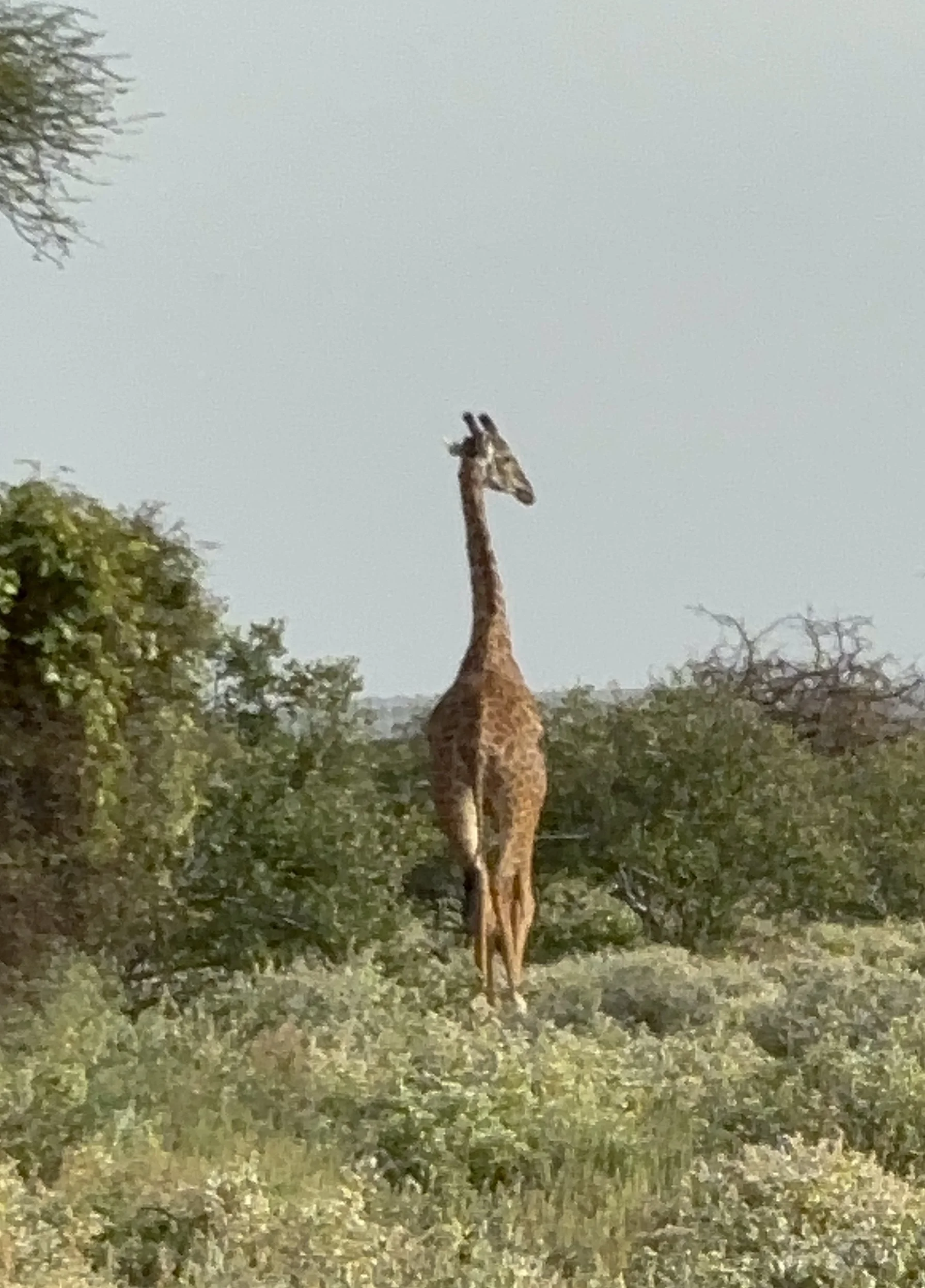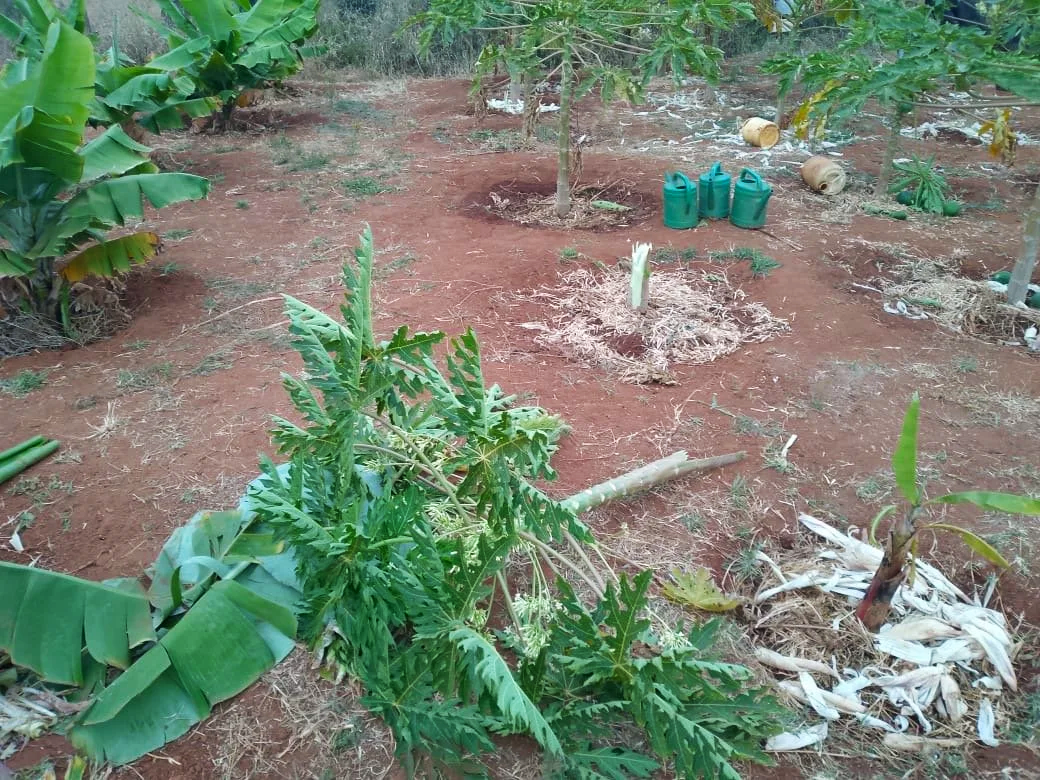Beyond the Roads: Bringing Hope to the Most Remote Corners of Kenya
In the rolling, sun-scorched landscapes of rural Kenya lie communities often forgotten, places where paved roads end and dirt tracks begin. Here, access to education is not just about affording school fees. It’s about reaching school in the first place.
Visiting schools on behalf of Light Up Hope often feels more like a safari expedition than routine outreach. On the journey to Lenkisem Secondary School in Kajiado, in southern Kenya, giraffes meander along the roadside, as commonplace here as deer are in many parts of the United States.
Along the same road, the team encounters a young student, barefoot and exhausted, walking alone for kilometers. She had been sent home due to unpaid school fees, with no transportation and only the hope of continuing her education driving her forward.
“Light Up Hope has reached where few dared, sometimes trekking long distances where there is no access, to reach and empower the forgotten girl, who had lost hope. We are powered by the belief that no girl should be left behind merely because she is away from the spotlight,” said Moses Murage, Light Up Hope Director.
“Light Up Hope has reached where few dared.”
Reaching Kenya’s remote communities, as difficult as it is, is essential for Light Up Hope’s mission. Each trip allows the staff to conduct interviews and select the next cohort of high school scholarship recipients, students whose lives can be transformed through continued education.
In Kima, deeper into Kajiado, the roads give way to rugged paths. Undeterred, the team follows a local teacher on a motorbike, navigating unmarked trails until the terrain forces them to abandon their vehicle and continue on foot. Despite reports of cheetah sightings in the area, the team hikes up a steep hill to meet families face-to-face, determined to find those who would most benefit from Light Up Hope’s support.
"I went on a work trip into the field, dressed in a casual way. We went and went, and it reached a point we had to alight because there was no path leading to the homestead. It was in the middle of nowhere, rocky and thorny. I had to jump over the thorny fences, very risky because the thorns could injure me. So I could imagine the children walking over the same route on a daily basis to go to school. It was so scary,“ said Victoria Sheri, Light Up Hope’s Education Advisor.
“I could imagine the children walking over the same route on a daily basis to go to school. It was so scary.”
A giraffe stands near the road near Lenkisem in southern Kenya.
Credit: Gracious Aganda/Light Up Hope
The Journey Is Just the First Battle
Even when they can traverse the challenging terrain of places like Samburu, in northern Kenya, girls often face an uphill battle for education, not just due to poverty, but because of deep-rooted cultural traditions. Early marriage, female genital mutilation (FGM), and domestic expectations still stand in the way of many girls’ dreams. In some families, educating girls is seen as unnecessary, or even a threat to tradition.
“The resilience of the girls we recently selected as beneficiaries is nothing short of extraordinary. Many are young mothers, others are girls who had dropped out of school due to early marriages or domestic responsibilities. Yet, they have shown immense courage and determination in their quest for education,” said Eliud Kipkorir, Light Up Hope’s Program Assistant.
“The resilience of the girls we recently selected as beneficiaries is nothing short of extraordinary.”
In these girls, Light Up Hope sees something special: a thirst for knowledge, a drive to succeed, and a courage to defy their circumstances. Many sponsored students are the first in their family to attend high school or college. They become mentors and role models, not only in academics but in challenging cultural norms and rewriting the future for themselves, their families, and their communities.
“Against all odds, they show up in classrooms, ready to write a new story for themselves. Their commitment shows that even the most remote and marginalized girls can rise, learn, and lead,” said Kipkorir.
A student translates her scholarship letter for her parent.
Credit: Gracious Aganda/Light Up Hope
Walking with Them as They Forge Their Path
Light Up Hope staff hike, adapt, and endure—because education should never be limited by geography. In places where roads are washed out by seasonal floods, where the cell signal is faint or nonexistent, and where reaching a village can mean hours on foot under the scorching sun, the team presses forward. It’s not easy, but it’s essential.
By traversing treacherous terrain, navigating unmarked paths, and reaching remote, often overlooked communities, Light Up Hope is identifying the girls most at risk of being left behind.
Through its Wezesha Project, Light Up Hope works to solve challenges that go beyond tuition, like insufficient food, a major barrier to school attendance and performance. The organization supports school gardens that provide fruits and vegetables to supplement students’ meals.
But even these efforts face unpredictable challenges. At Illmolelian Primary School in Kajiado, a group of elephants recently invaded the school’s fruit garden, destroying most of the fruit trees. Incidents like this are a stark reminder of how complex and fragile access to education can be in remote areas.
A pawpaw tree near Illmolelian Primary School in Kajiado was destroyed by elephants.
Credit: Pauline Mwende/Light Up Hope
In these hard-to-reach places, education is a lifeline. And Light Up Hope is committed to extending that lifeline as far as it must go—because every child, no matter how remote their home, deserves the chance to learn, grow, and lead.
Currently, the organization supports a total of 171 high school beneficiaries:
23 students in Samburu, where pastoralist traditions and long travel distances make schooling especially difficult for girls;
13 students in Narok, working alongside local leaders to address early marriage and keep girls in school;
96 students in Kajiado, a region where poverty and gender barriers often stand in the way of education; and
39 students from rural and urban slum areas in regions such as Central, Nairobi, Mombasa, Western, Eastern, and Rift Valley.
Each girl has a story of resilience, determination, and hope. Some walk miles to school each day. Others balance household responsibilities while finding time to study before dawn. These students are not only investing in their own futures, they are forging a path through challenging terrain to achieve a better future for entire communities.
Eric Topiko, a Light Up Hope staff member, navigates through a muddy road in Kajiado. (Credit: Stephen Yohana/Light Up Hope)
Join the Journey
When you support Light Up Hope, you're not just giving school fees. You're helping us cross rivers, dodge wildlife, and scale hills. You're reaching the most vulnerable, in the most remote places, and giving them a future.




